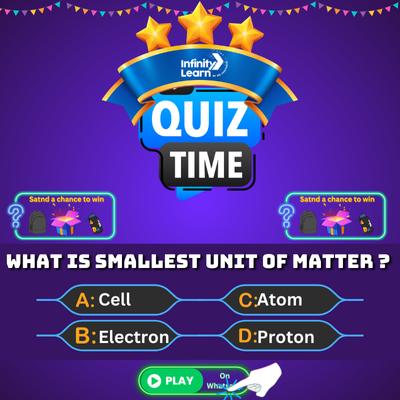Table of Contents
How Many Alphabets in English: Have you ever wondered how many alphabets are there in the English language? The English alphabet is one of the most widely used writing systems in the world. It consists of 26 letters, each with a unique sound and role in forming words. These letters are divided into vowels and consonants, making up the foundation of English reading, writing, and communication.
Whether you’re a beginner learning English or just curious about its structure, understanding the English alphabet system is the first step toward mastering the language.
How Many Alphabets in English Language?
While most of us grow up learning the ABCs, few actually dive deeper into the origin, structure, and purpose of the English alphabet. In this blog, we’ll explore the number of letters in English, their history, how they’re used, and how you can teach them effectively—especially to children.
What is an Alphabet?
An alphabet is a set of letters or symbols used to write a language. Each symbol usually represents a sound or phoneme, and when combined, these letters create words. The English language uses the Latin alphabet, which has been in use for centuries and is now a global writing system.
The term “alphabet” comes from the first two letters of the Greek alphabet—Alpha and Beta.
Also Check: How to Learn English
Origin of Alphabets
The idea of alphabets dates back thousands of years. The earliest known alphabet is believed to be the Phoenician alphabet, developed around 1050 BCE. It influenced many writing systems, including Greek, Latin, and Hebrew.
The Latin alphabet, which the English alphabet is based on, came from the Greek alphabet and was adopted by the Romans. Over time, it evolved into the 26-letter system we use today in modern English.
Languages Around the World and Their Alphabets
Different languages use different alphabets, and the number of letters in each can vary. Let’s look at a few examples:
| Language | Number of Letters | Writing System |
|---|---|---|
| English | 26 | Latin Alphabet |
| Russian | 33 | Cyrillic Alphabet |
| Arabic | 28 | Arabic Script |
| Hindi | 46 | Devanagari Script |
| Korean | 24 | Hangul Alphabet |
| Greek | 24 | Greek Alphabet |
How Many Alphabets in English Language?
The English alphabet consists of 26 letters, divided into two categories:
- 5 vowels
- 21 consonants
These letters are the building blocks of all English words.
Also Check: Fun Facts about English
What Are Vowels and How Many Vowels Are There?
Vowels are letters that represent open, continuous sounds made without blocking airflow. There are 5 vowels in the English alphabet:
A, E, I, O, U
These vowels can make short or long sounds and sometimes change their sound depending on the word (like “a” in cat vs. cake).
Example words:
A – apple
E – elephant
I – ice
O – orange
U – umbrella
Also Check: Hindi Alphabet
What Are Consonants and How Many Are There?
Consonants are all the other letters that are not vowels. They involve stopping or restricting the airflow when spoken.
There are 21 consonants in English:
B, C, D, F, G, H, J, K, L, M, N, P, Q, R, S, T, V, W, X, Y, ZExample words:
B – ball
C – cat
D – dog
F – fish
Note: The letter Y can act as both a vowel and a consonant depending on its use. In yellow, it’s a consonant; in happy, it behaves like a vowel.
What is the 27th Alphabet in the English Language?
Did you know the English alphabet once had 29 letters? Back around the year 1011, Old English used a few extra letters that we no longer use today. Some of the letters that were eventually dropped include: &, ⁊, Ƿ (wynn), Þ (thorn), Ð (eth), and Æ (ash).
Interestingly, the ampersand (&) was even considered the 27th letter of the English alphabet and was commonly taught in schools until around 1835.
From 29 to 26 Letters
Today’s modern English alphabet has 26 letters. Out of these:
23 letters come directly from Old English.
The letters J, U, and W were added later as the language evolved.
So, while the alphabet looks simple now, it has a rich and fascinating history behind it!
What Are the Phonetic Sounds of Each Letter?
Each letter in the English alphabet can represent one or more phonetic sounds. Here’s a basic chart with common sounds:
| Letter | Sound | Example |
|---|---|---|
| A | /æ/ | as in apple |
| B | /b/ | as in bat |
| C | /k/ | as in cat |
| D | /d/ | as in dog |
| E | /e/ | as in egg |
| F | /f/ | as in fan |
| G | /g/ | as in go |
| H | /h/ | as in hat |
| I | /ɪ/ | as in in |
| J | /ʤ/ | as in jam |
| K | /k/ | as in kite |
| L | /l/ | as in lamp |
| M | /m/ | as in man |
| N | /n/ | as in net |
| O | /ɒ/ | as in on |
| P | /p/ | as in pen |
| Q | /kw/ | as in queen |
| R | /r/ | as in rat |
| S | /s/ | as in sun |
| T | /t/ | as in top |
| U | /ʌ/ | as in cup |
| V | /v/ | as in van |
| W | /w/ | as in wet |
| X | /ks/ | as in box |
| Y | /j/ | as in yes |
| Z | /z/ | as in zoo |
How to Teach a Child the Alphabet
Teaching the alphabet to children can be fun and effective with the right approach. Here are some tips:
Steps to Teach the Alphabet:
- Start with songs like the ABC song to make learning musical.
- Use flashcards with pictures for visual memory.
- Introduce uppercase and lowercase letters together.
- Begin with vowels and common consonants like B, D, M.
- Use alphabet books and storytelling.
- Engage them with alphabet games and apps.
- Practice writing letters with crayons, chalk, or finger tracing.
- Reinforce learning with everyday examples (e.g., “B is for Ball”).
- Be patient and make learning a daily, fun habit.
Why Learning the Alphabet Is Important
Knowing the alphabet is the foundation of reading, writing, spelling, and speaking English. Without understanding letters and their sounds, building vocabulary and sentence structure becomes difficult.
- Learning the alphabet also improves:
- Cognitive development
- Language fluency
- Early reading skills
Fun and Interesting Facts About the English Alphabet
1. The English Alphabet Has 26 Letters
That’s right—just 26 letters form the base of millions of words in the English language!
2. There’s No Official 27th Letter… But There Used to Be!
Back in the day, the ampersand (&) was taught as the 27th alphabet. It stood for the word “and” and came after the letter Z in some schoolbooks.
3. Alphabet ≠ Alphabets
Many people ask “how many alphabets in English?” — but the correct question is “how many letters in the English alphabet?”
Alphabet refers to the entire set of letters, not individual ones.
4. The Alphabet Has Only 5 Vowels… Or Does It?
The English alphabet officially has 5 vowels: A, E, I, O, U. But sometimes, Y and even W can act like vowels depending on the word—making it a fun twist for language learners.
5. Every Letter Has an Uppercase and Lowercase Form
So, technically, you’re learning 52 characters (A-Z and a-z), even though we still call it the 26-letter alphabet.
6. The Letter “E” is the Most Used Letter in English
Words like eat, read, sleep, believe, energy—they all have E! In fact, E appears in about 11% of all English words.
7. “J” Was the Last Letter Added
Although it looks like it belongs, the letter J wasn’t added until the 1500s. It evolved from the letter I, which originally did double duty.
8. The Alphabet Can Be Sung!
The ABC song is one of the first things children learn—making the English alphabet the only group of symbols most people can sing by heart!
9. Some Letters Are Rare in English Words
Letters like Q, X, and Z don’t appear as often. That’s why they’re worth more points in word games like Scrabble!
10. Alphabet Comes from Alpha + Beta
The word alphabet comes from the first two Greek letters: Alpha and Beta. It’s a combination of history and language!
Bonus Tip: Knowing the Alphabet = Reading Power
Once you know the alphabet, you’re already on your way to learning to read, write, spell, and even speak better English.
Final Thoughts
To sum up, the English language uses a 26-letter alphabet made up of 5 vowels and 21 consonants. These letters come from the ancient Latin alphabet and form the basis of all English communication. Whether you’re just learning or teaching someone else, understanding the English alphabet structure, phonetic sounds, and learning methods makes the process simple and enjoyable.
How Many Alphabets in English FAQs
What are the 27 alphabets in English?
The modern English alphabet officially has 26 letters, but in the past, the ampersand (&) was taught as the 27th letter. It stood for the word and and was part of the alphabet until the early 1800s.
What are the 29 alphabets in English?
Historically, Old English used 29 letters, including now-obsolete ones like Æ, Þ, Ð, ⁊, Ƿ, and &. These extra characters were part of English before the alphabet was simplified to the current 26-letter system.
How many letters are in an English alphabet?
There are 26 letters in the English alphabet, ranging from A to Z, including 5 vowels and 21 consonants. These letters form the basis of all written English.
How many types of alphabets are there in English?
In English, we use one alphabet system, but it has two types of letter cases: Uppercase letters (A–Z) Lowercase letters (a–z)
What are the small letters A to Z?
The small letters or lowercase letters in the English alphabet are: a, b, c, d, e, f, g, h, i, j, k, l, m, n, o, p, q, r, s, t, u, v, w, x, y, z
How many types of English alphabets are there?
There is one English alphabet, but it is written in two letter forms: Uppercase (Capital) Lowercase (Small) These are used based on grammar rules and sentence structure.
How many different alphabets are there?
Globally, there are over 100 different alphabets used across languages. Some examples include the Latin alphabet (used in English), Cyrillic, Arabic, Devanagari, and Greek alphabets.








